Dotcom's cable - fact or fantasy? Kim makes his case
Dotcom invites NBR to his mansion, and details a scenario where Mega buys $20 million bandwidth a year. UPDATE: A major ISP's bandwidth price chart.
Dotcom invites NBR to his mansion, and details a scenario where Mega buys $20 million bandwidth a year. UPDATE: A major ISP's bandwidth price chart.
Last Monday, I pinged other media for giving Kim Dotcom soft coverage over his plan to reboot Pacific Fibre (including TVNZ's website; the state broadcaster is swung in the other direction with a Sunday investigation this weekend; more on Kim's background in Comments).
I called Kim’s cable plan a fantasy.
He invited me out to Dotcom mansion to convince me otherwise.
Sorry Kim, you didn’t.
I still think you’re kidding yourself, or being willfully optimistic, on several key points.
Nonetheless, the giant German did very articulately nail why Pacific Fibre failed, and the conditions needed for a new contender to succeed.
Kim asked me to bring some industry people, so on short notice I rounded up a crew – Telecommunications Users’ Association CEO Paul Brislen, InternetNZ community lead Ellen Strickland and Institute of IT Professionals head Paul Matthews.
I also asked Pacific Fibre co-founder and chief technology officer John Humphrey (so did Kim, coincidentally, which turned out to be what tipped his decision to come along).
Pacific Fibre alumni had an interesting range of reactions when I contacted them about Kim’s proposal.
Sam Morgan wished any new cable contender well. But he was out of the game. He noted Pacific Fibre has spent a lot of money without succeeding.
CEO Mark Rutherford (and he is very much CEO on paper these day, with Pacific Fibre only existing as a line on the Companies Office register) was interested, but had a clashing commitment. He hoped to meet Dotcom shortly for a chat.
Rod Drury welcomed the fact fibre was back on the agenda, but told me Kim’s comments were “not helpful”. I think Rod worries that the second cable debate will become intertwined with Dotcom’s various past and present legal controversies, distracting from straight discussion of his new public-private partnership cable concept.
A graphic illustration of why two cables are better than one: the price of international bandwidth for a larger NZ ISP that cannot be named (click to zoom). ISPs sell chunks of data (that is, gigabytes) to their customers, but buy capacity from Southern Cross (or one of its wholesalers). Capacity is measured in megabits, gigabits and terabits – that is, the size of the pipe. Pacific Fibre ceased operations Aug 1.
Anyhow, myself, Paul, Paul and Ellen duly arrived at Dotcom Mansion midday on Tuesday.
There was no swimming or Segway hooning. We just sat around a table, talked cable economics and drank water (in a vain bid to jazz things up, I later told colleagues it was Mega Water, but the truth is it was just water).
Anyhow, this is Kim’s cable scenario:
His new company, Mega, is willing to become an anchor customer for whoever is willing to build a second cable, be it a re-animated Pacific Fibre, Rod Drury’s new push for a public-private partnership or Hawaiki or any other contender.
He told NBR his proposed new file-sharing service (due to launch on January 20), could buy $US20 million bandwidth a year within three years on a new fibre optic link.
Over 10 years, that would give a start-up around half the funds it needs (Pacific Fibre tried to raise $400 million for a Sydney-Auckland-LA cable).
To put that in perspective, he says Megaupload bought $40 million bandwidth a year.
Dotcom would also look at taking a share in a new cable company (right now, most of his assets are frozen and Mega has yet to launch and start getting new funds in the door).
I he does take a share – and bear in mind he’s talking a multi-year plan – he would be in a position to sway things toward his vision of full-cost broadband for business and government, and heavily subsidised accounts for individual Kiwis (he sees an international cable company providing free access for individuals, then ISPs adding a small fee to cover basic connection costs, so broadband would only cost about 15% of what it does today. I’m sure hard-nosed ISP owners would have their own definition of a small fee).
Dotcom does not need a new cable out of New Zealand to launch Mega. Hundreds of inquiries have come in to host the new file sharing service, which is set up from the get-go to be distributed (spread around server computers in different locations).
But he has registered Mega Ltd in New Zealand, he says.
"Mega and Megabox will have over 2 terabits of daily bandwidth utilisation within three years. Which is significantly more bandwidth utilisation than all of New Zealand's traffic combined.
"We would serve North American, South American and Australian Mega customers via servers based in New Zealand," Dotcom says.
Chicken-and-egg
But he could only serve those customers from New Zealand if:
1. A new submarine cable is laid to the US.
2. A huge new data centre is built here to host Mega (and here, again, Dotcom is not proposing to build one but become an anchor customer).
"Classic chicken-and-egg scenario," Dotcom says.
New Zealand, with its mild climate and relatively cheap, clean power is in some ways an attractive location for data centre operators.
But no one is going to build a supermassive data centre here unless a second cable is run out of New Zealand ... and no one is going to fund a second cable without some massive boost in bandwidth demand, such as a giant data centre.
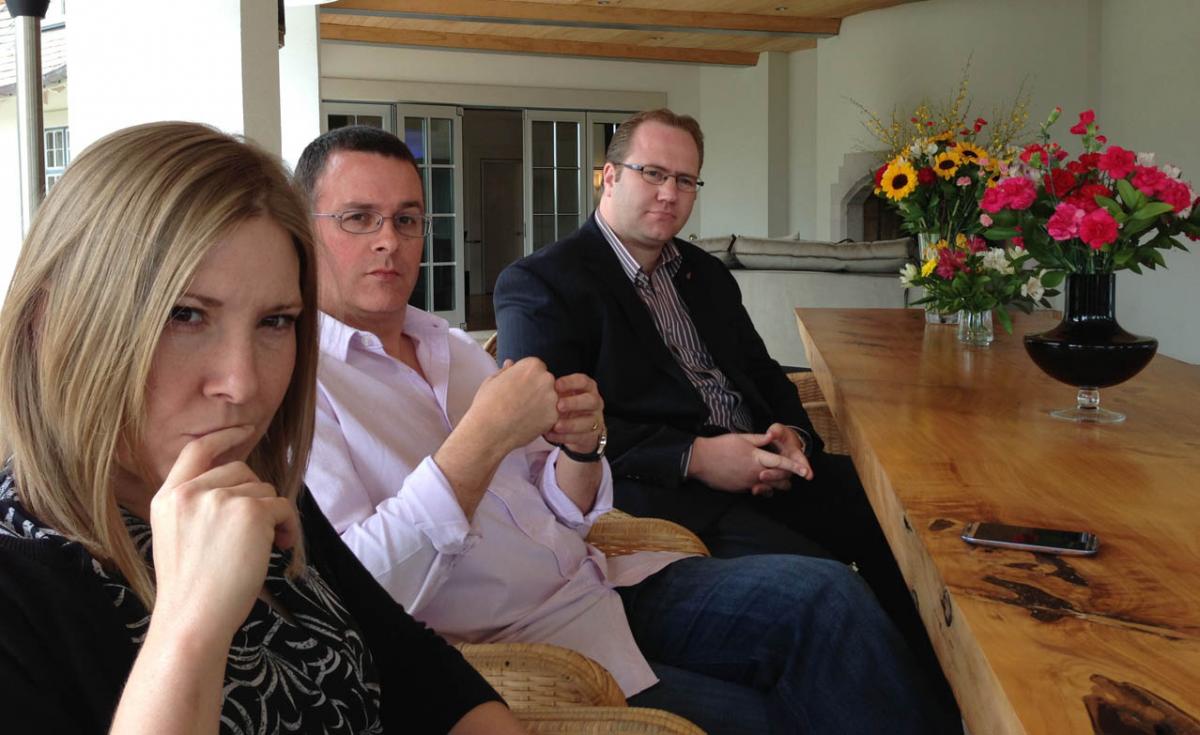
L-R: InternetNZ's Ellen Strickland, Tuanz head Paul Brislen, Institute of IT Professionals CEO Paul Matthews.
Need to be bandwidth demand makers, not takers
Humphrey said no cable there's no business case for a cable from New Zealand to the US.
As InternetNZ's Strickland frames it, public attention has been on cost and capacity, but the bottom line is that for a cable to succeed, we have to be "bandwidth demand makers, not takers".
NBR understands New Zealand ISPs typically have to buy bandwidth in both directions on the Southern Cross Cable. Since most of the traffic is one way, that effectively doubles the price.
"In the early days of Pacific Fibre I used to describe it as a cable that goes from Australia to the US that just happens to go through a small, impoverished Pacific Island nation along the way because only 10% to 15% of the traffic is New Zealand. If you can make the business case for Australia, then a little bit extra for New Zealand [such as a Mega data centre] then New Zealand can get connected," Humphrey says.
Most of our traffic is one-way (New Zealanders drawing data downwards as they access US sites and services), and relatively tiny demand at that. Pacific Fibre said it had one US-based telco as a customer, but never detailed the deal. A new contender needs major increase from the northern hemisphere. Cable economics demand a two-way street.
Having a Mega server farm based in New Zealand would boost demand for data based here by a factor of 14, Humphrey says – making a cable a far more economic proposition.

Pacific Fibre co-founder John Humphrey and Kim Dotcom: Both strongly believe the government should divert some of its $12.3 billion Roads of National Significance budget to an international cable.
Why not just buy capacity on the Southern Cross Cable (the 50% Telecom-owned fibre link that is currently our only major broadband connection with the outside world)?
Dotcom said there were issues of capacity and redundancy. Humphrey, perhaps anticipating Southern Cross' perennial objection to redundancy arguments (its figure 8 design means it functions as two cables, able to continue if any given segment is taken out of action, as we saw Friday morning), says that Google and other operators of huge server farms prefer to deal with two separate organisations.
Tasmanian future
Humphrey adds, "Southern Cross is halfway through its life. When it dies, if there’s no replacement, someone will build a cheap little Transtasman one and that will be it. We’d be connected to the internet but forever under the sway of Australia. We'll be doomed to be just that little transtasman cable. We’ll be like Tasmania."
Brislen adds that any transtasman cable is a "three-hour flight in the wrong direction" taking data further away from the main internet hub of the US and increasing the killer problem of lag (more of which shortly).
How do we break out of the chicken-and-egg no-cable-without-mega-datacentre/no-mega datacentre-without-cable-logjam?
"Bit less tarmac and a few more bits," Humphrey says.
Take a sliver of the government's $12.3 billion budget for Roads of National Significance and use it to subsidise or incentivise a second cable, or giant data centre, or both.
Dotcom chips in: "Cut one of the lanes off that road and build five cables. One to the US, one to India, one to South Africa ... and connect yourselves to the world. Boom! That would be a much better investment than than roads."
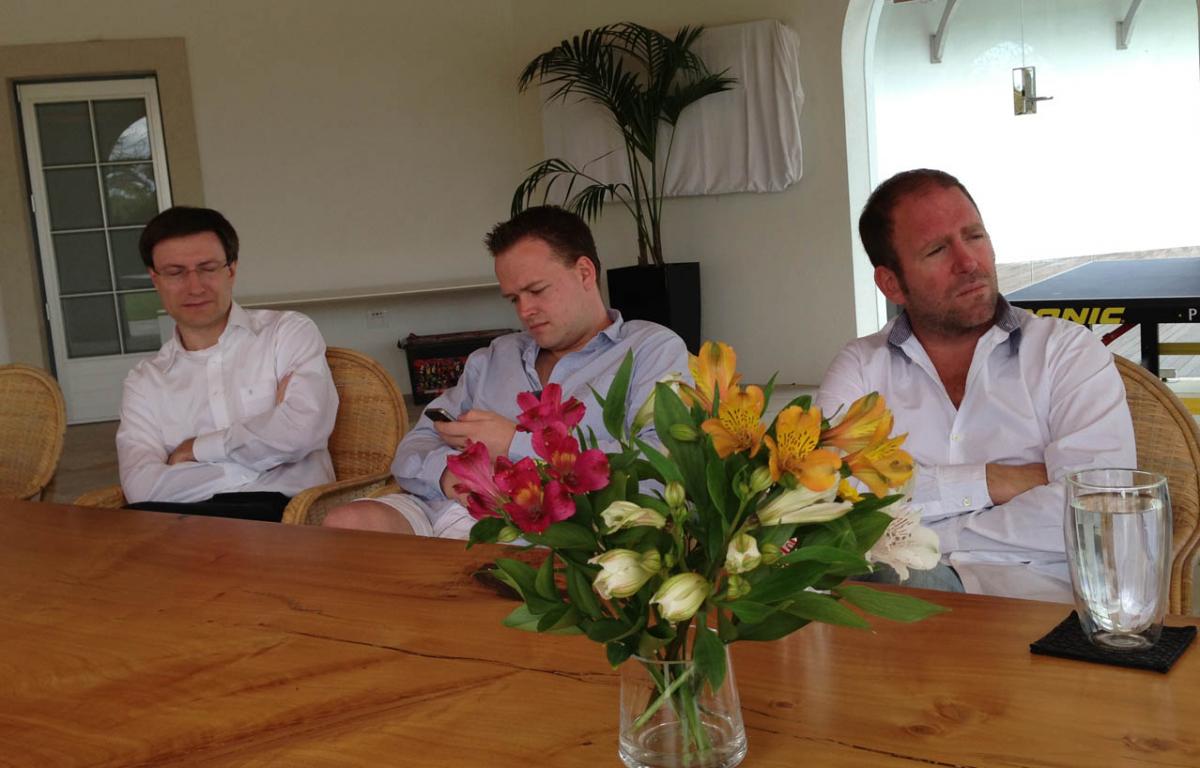
Also attending, but letting their boss take the lead: Dotcom's colleagues and co-accused Mathias Ortmann (the operation's chief technology officer) Bram van der Kolk (website management) and Finn Batato (chief marketing officer).
The government did back Pacific Fibre to a not insignificant degree. It put a major Crown bandwidth contract out to tender, worth up to $91 million over 10 years, with a proviso that only new cable operators could tender.
But Humphrey laments, "The big Maori funds, ACC, the Super Fund. None of them stepped up." The Super Fund judged the project too risky. Others expressed enthusiasm but, when it came down to it, would not get their cheque books out (Lance Wiggs has noted that "Pacific Fibre didn’t even manage to sell to Government-owned Orcon, whose boss, Scott Bartlett, was a strong Pacific Fibre booster. Parent company Kordia has its a Transtasman cable plan).
The private sector swung in, with Vodafone, CallPlus and iiNet (Australia's largest independent ISP) committing to major 10-year bandwidth contracts. But it wasn't enough to satisfy potential investors.
Assuming the government has a change of heart, and offers more support for a future cable contender and/or a major domestic data centre project gets under way that makes the project more feasible, there's still another problem – at least if Kim Dotcom's involved.
One Pacific Fibre co-founder noted to NBR that the GCSB has to vet anyone who wants to land a submarine cable in New Zealand.
Dotcom brushes away this objection. It's not his cable. It's owned and run by a separate company. He's just the largest customer.
And besides, "The GCSB listened to me for a few months. They know I’m no threat. They know I’m a nice guy. They probably have the transcripts of phone calls I had with people in Hollywood when I was talking to them trying to be a partner, not a pirate or some sort of bad guy."
But what about the US landing?
Again, Kim says he's not the operator. And he doesn't think the Americans would mess with what he sees as an economically transformative project for New Zealand.
"We are a customer on the new cable. An attack on us would affect all New Zealanders. They can’t pinpoint us. They would have to put significant harm to everyone else in New Zealand. I don’t think that’s a likely scenario."
I do. Kim sees the US government taking a fair, high-minded approach to the new cable. He thinks the US government now regrets the Megaupload case and is hopeful there will be some kind of resolution in the wake of the election.
But it disingenuous that the US would single him out over Megauplaod and his new project (shortly after we talked, it seemed to have pressured Gabon to suspend Mega's domain; the Department of Justice has also hinted at new charges if Mega launches) but take a neutral stance on a Kim Dotcom cable. And, make no mistake, a cable which has Mega has its largest customer would become known as the Kim Dotcom cable, whatever its own ownership structure.
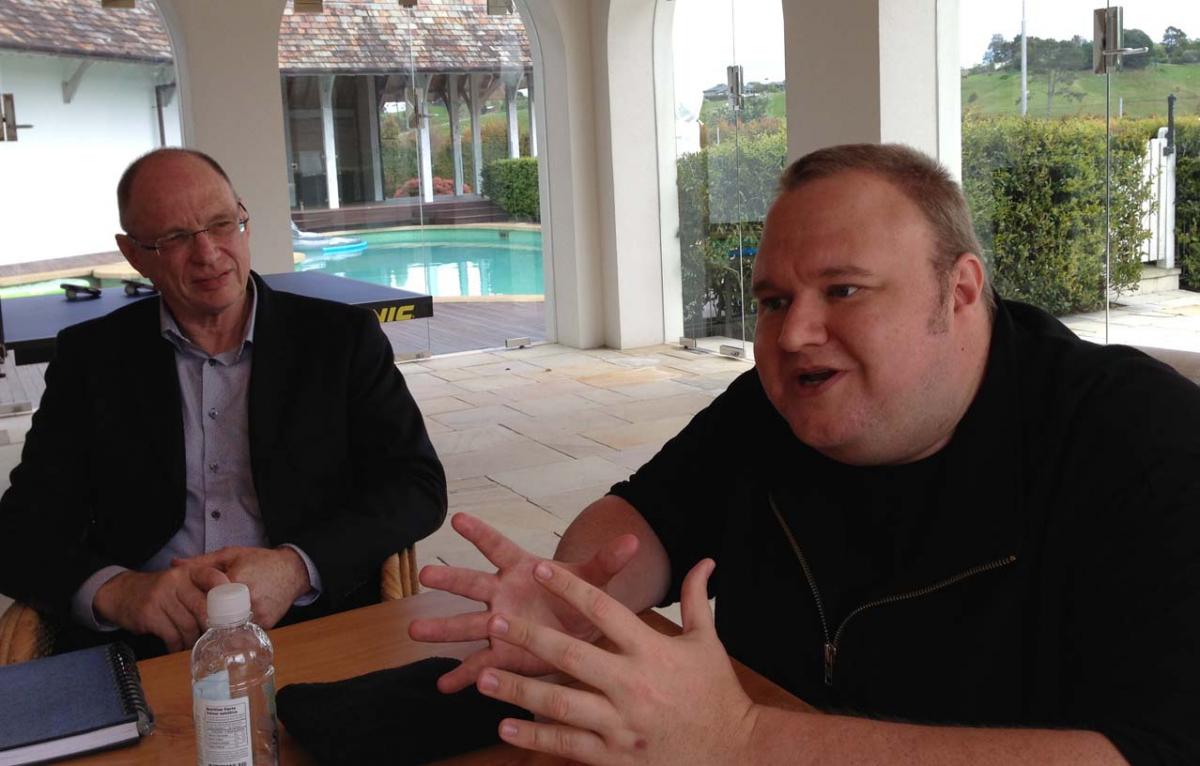
Dotcom emphasises his independence, but mulls deeper involvement down the line
Look, we are not in the business of building a data centre. But if the cable happens, we want to work with people who are in the business of building data centres and since this story broke we have been approached by a number of people who say, “We want to build the biggest data centre, would you be our customer? And this is what we want to be," he says.
"We would be a customer of this [data centre]; we would be a customer on the cable. If this customer relationship also allows us to become a shareholder we would love to do that. You know, it makes perfect economic sense."
Kim thinks he can woo potential investors, and help broker peering agreements (quid pro quo traffic arrangements) with network providers that would play the crucial role of keeping traffic costs down for those using an New Zealand-based data centre.
What about the alternative plan he put forward – suing Hollywood studios and/or the US goverment to raise funds for a cable?
Kim winces. He says it is very much a "Plan B" and he was surprised media seized on it (an inevitable outcome, I suggest, you can accuse the giant German of many things, but employing slick PR is not one of them).
Nevertheless, he says his legal team is now very confident of winning his case.
And they have indicated that if he does, there will be some kind of settlement down the line. If he does receive a settlement, he will put it toward a cable project, Kim says.
He has no plans to sue the New Zealand government. The Mega Ltd company name has been registered here. Mega will pay taxes in New Zealand and could employ around 100.
Kim riffs on with cable company ideas. "Another possibility would be to list it," he says.
"That would have happened with Pacific Fibre at some point," Humphrey adds.
Eighteen months ago, the Pacific Fibre co-founder wrote a white paper on New Zealand as a giant data centre destination. This week, he delivered it to a data centre conference in Sydney.
"We looked at Hamilton, it’s geologically stable, near a river for water, near geothermal, near Auckland enough for a [cable] landing. That’s a good location – you’d really invent Hamiltron," he says.
Obviously, there are data centres in New Zealand already. But Humphrey's white paper is looking at a centre on the scale of Google's largest server farms; one that would have its own power station and consume up to 500 megawatts of electricity.
Dotcom add that if the Bluff alumuninium smelter is closed, the Manapouri power station could be redeployed to power a massive server farm.
Australia by contrast, has dirty power and, of course, several very hot months per year that pile on air con costs (interestingly, we've already seen some data centre action drift across the Tasman. Server farm operator and major Southern Cross Cable wholesaler recently bought NZ's Maxnet, and has plans to expand its data centre operation. And Australasian publisher APN – a major customer of Wellington-headquartered Datacom – hosts some of its Australian operations from NZ. Read more on the power and data centre questions in Paul Brislen's Strawman: How to save the New Zealand economy).
Distance no longer a killer
On the internet, to a degree, geography is destiny. And Dotcom says when he first met with Pacific Fibre, a couple of years ago, latency (or lag) of up to 140 milliseconds on an international cable made it unfeasible to host data here.
He says technology has overcome this objection.
"The beauty of the HTML 5 technology today and the new browsers is you can have download accelerators and upload accelerators built into the browser to open multiple connections to your target and they’re all transmitting data so the only latency issue is really the initial contact – and when half a second takes you one time around the globe it’s not a big issue," he says.
"So with a large file or streaming video you can utilise your entire bandwidth that you have available.
"Now location isn’t a problem any more and you can have users connecting to you from all around the world without any sort of downside."
Humphrey says he's approached potential builders of a super-size data centre.
"I’ve met with Google a lot. I’ve gone through the list with them. They have a list of about 40 criteria, but the top two are the ones that drive the decisions: power and bandwidth."
Kim adds, "You know, they would drop 30 of the top 40 boxes if you would provide a nice safe harbour law."
Even if it chips in no money, the government could pass legislation that made New Zealand the Switzerland of data.
"The other thing is this: New Zealand is a beautiful country. If you are a Google data centre engineer, and they ask you 'Do you want to move to Mumbai or do you want to move to the South Island of New Zealand?' Where do people want to bring their families? The safety here; the beauty of it."
He adds, "For anyone who has any kind of phobia about what’s happening with the world, New Zealand is the perfect location."
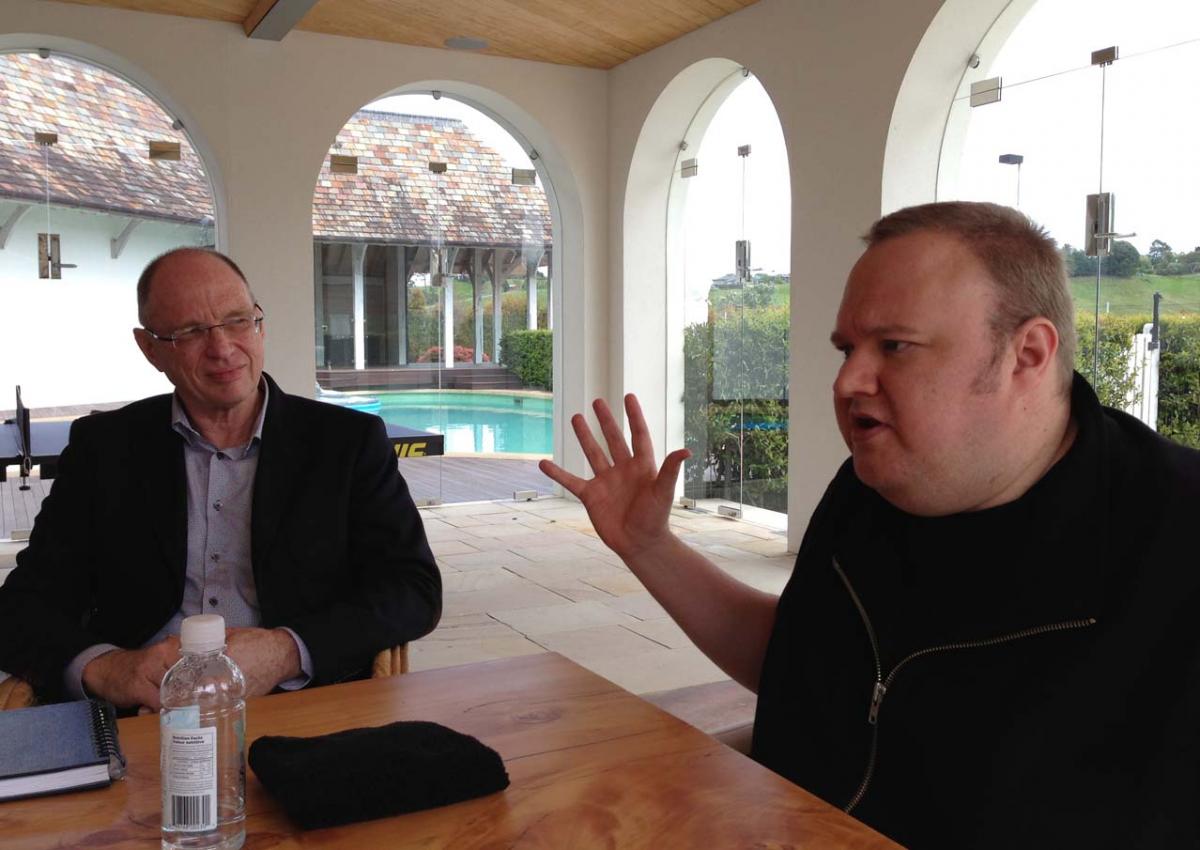
I'm not the bad guy: Dotcom faces extradition to the US on copyright, money laundering, wire fraud and racketeering charges centering on a the claim he caused $500 million damage to movie studios and other rights holders, and made $US175 million in illegal profits. He says he could make Hollywood money hand-over-fist from online if only it would work with him, not against him.
For capable capacity and data centre demand, the new Mega has to prove popular.
Kim thinks it will be bigger than Megauplaod. People's wariness will be overcome by Mega's innovations, including its its distributed server setup (with files replicated across multiple servers, so a raid on one location would not make a file inaccessible) and its one-click encryption, which he says is pioneering in its user-friendliness (as well as being a legal safeguard).
He adds, "I have worked on solutions to get content providers paid. I’ve spent millions of dollars on software called Mega Key which allows monetisation of free downloads. And I’ve built that for content creators.
"That’s what this Mega Box business will be based on – where you can basically download music for free has long as you have the Mega Key software installed on your computer which automatically replaces ads on the fly when you serve to other websites.
"You know, so it gives ad revenue which you can in turn use as credit to buy content. And if that works for music, down the road it’s also going to work for movies or any other content, even news sites.
"We would work with artists direct. Of course, labels could also work with us. They get 90% of the share and they get paid for free downloads, where as now there’s no provider out there who monetises that at all."
Doesn’t YouTube give people a share of ad revenue, once a clip generates significant traffic?
"Yes, but the big difference here is YouTube has an on-site advertising model. You are on their website. It serves three ads. No one's going to pay a dollar for three ads."
And while Humphrey may be wooing Google, Kim (no doubt with one eye on a likely line of defence if the Megaupload case ever goes to trial) takes a further swipe at the search engine's video-sharing site.
"If you go on YouTube right now, you’ll find more infringing material now than we had in our entire history," he says. He also claims Google is the world's biggest index for pirated material.
There needs to be a solution for content providers, but that cannot be military force and helicopters, Kim says.
"With Mega, no one is criminalised any more. Everyone can have everything in abundance. Think about this. If a company like Gooogle can make $40 billion a year, what do you think a joint start-up of all Hollywood studios could generate in combination with something like Mega Key.
"They have what everybody wants. They just don’t know what to do with it. Guys like [movie mogul] Sumner Redstone – he's in his 80s and does everying with a pen. They don’t see it.
"They pick up the phone and they say, 'F**k you Joe Biden, I’m not giving you another chequ unless you take these f***kers down and that’s how this all went down."
Kim fumes, "The political interference in this whole case is quite significant." Former Justice Minister Simon Power also comes in for a verbal beating.
Yet he also wants to move on. "I don’t want to be remembered as the guy who got raided." He wants to contribute.
The question: are NZ politicians, US authorities and Megaupload's original customers willing to give him a second chance?
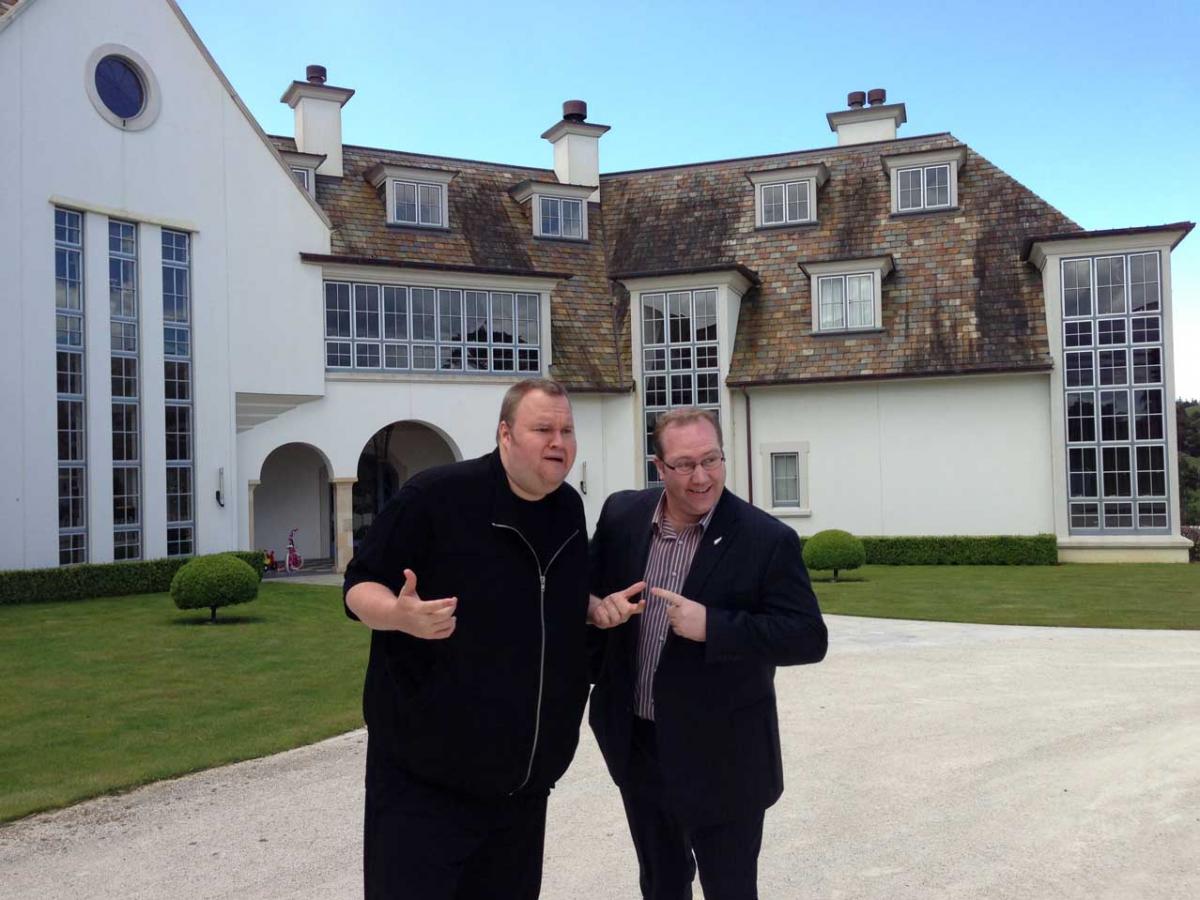
As the session winds down, Institute of IT Professionals CEO Paul Matthews hams it up with Dotcom. On a more serious note, Matthews says many of his members see the action against Megaupload as heavy-handed. His organisation held a "Mega Breakfast" in support of the entrepreneur – who was unable to attend because of bail restrictions at the time.
RAW DATA: Kim Dotcom's original email to media on his cable plan
We have decided to open the new Mega company in NZ, create jobs here and become a significant tax payer. Me.ga and Megabox will have over 2 terabits of daily bandwidth utilization within 3 years. Which is significantly more bandwidth utilization than all of NZ's traffic combined. We would serve North American, South American and Australian Mega customers via servers based in NZ. The submarine cable costs 400 million. We would fund a share and raise additional funds from Investors and backbone providers. Mega would be the single largest customer on the new cable and our presence here would attract new Internet businesses to open in NZ. Once the cable is installed it is relatively cheap to maintain. We would provide all NZ ISP's with free access to the cable for individual customers (citizens) and charge a fee to business and government customers. Because ISP's control the last mile & provide equipment like routers they would still charge a fee but it could be as low as 15% - 20% of current bandwidth plans with 3-5 times faster connection speeds and without transfer limits. I was always of the opinion that Pacific Fibre was the most important Investment into the future of New Zealand to ensure its competitiveness in the online world. You have clean and cheap energy here. Power is becoming the biggest cost factor for data centers around the world. With its own cable, cheap power and connectivity NZ could attract foreign Internet business. Unfortunately the current Government wants to invest into more tarmac roads. In 10-15 years more people will work and shop from home. You don't need Tarmac, You need Fibre!
Plan B is to win the case, sue the Hollywood studios and/or the US government for their bad faith / unlawful and political destruction of my business and pay for Pacific Fibre with the damages received.
Sign up to get the latest stories and insights delivered to your inbox – free, every day.